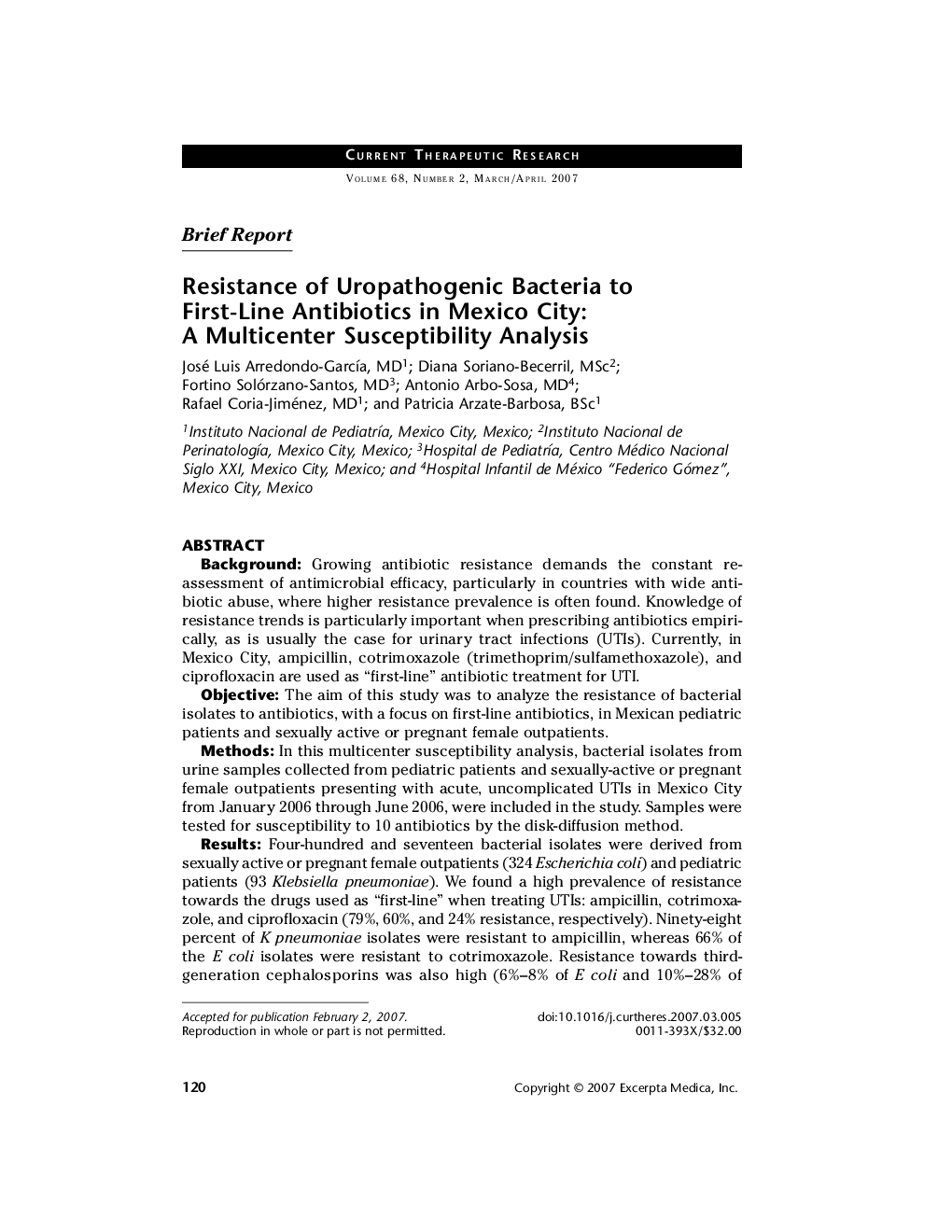| کد مقاله | کد نشریه | سال انتشار | مقاله انگلیسی | نسخه تمام متن |
|---|---|---|---|---|
| 4197019 | 1278735 | 2007 | 7 صفحه PDF | دانلود رایگان |

BackgroundGrowing antibiotic resistance demands the constant reassessment of antimicrobial efficacy, particularly in countries with wide antibiotic abuse, where higher resistance prevalence is often found. Knowledge of resistance trends is particularly important when prescribing antibiotics empirically, as is usually the case for urinary tract infections (UTIs). Currently, in Mexico City, ampicillin, cotrimoxazole (trimethoprim/sulfamethoxazole), and ciprofloxacin are used as “first-line” antibiotic treatment for UTI.ObjectiveThe aim of this study was to analyze the resistance of bacterial isolates to antibiotics, with a focus on first-line antibiotics, in Mexican pediatric patients and sexually active or pregnant female outpatients.MethodsIn this multicenter susceptibility analysis, bacterial isolates from urine samples collected from pediatric patients and sexually-active or pregnant female outpatients presenting with acute, uncomplicated UTIs in Mexico City from January 2006 through June 2006, were included in the study. Samples were tested for susceptibility to 10 antibiotics by the disk-diffusion method.ResultsFour-hundred and seventeen bacterial isolates were derived from sexually active or pregnant female outpatients (324 Escherichia coli) and pediatric patients (93 Klebsiella pneumoniae). We found a high prevalence of resistance towards the drugs used as “first-line” when treating UTIs: ampicillin, cotrimoxazole, and ciprofloxacin (79%, 60%, and 24% resistance, respectively). Ninety-eight percent of K pneumoniae isolates were resistant to ampicillin, whereas 66% of the E coli isolates were resistant to cotrimoxazole. Resistance towards third-generation cephalosporins was also high (6%–8% of E coli and 10%–28% of K pneumoniae). This was possibly caused by chromosomal β-lactamases, as 30% of all isolates were also resistant to amoxicillin/clavulanate. In contrast, 98% of the E coli isolates and 84% of the K pneumoniae strains (96% of all isolates) were found to be susceptible to nitrofurantoin, which has been in clinical use for much longer than most other drugs in this study.ConclusionIn these urine samples from laboratories in Mexico City, resistance of K pneumoniae and E coli isolates to first-line treatment (ampicillin, cotrimoxazole, or ciprofloxacin) of UTI was high, whereas most E coli and K pneumoniae isolates were susceptible to nitrofurantoin and the fourth-generation cephalosporin cefepime. (Curr Ther Res Clin Exp. 2007;68:120–126) Copyright © 2007 Excerpta Medica, Inc.
Journal: Current Therapeutic Research - Volume 68, Issue 2, March–April 2007, Pages 120-126